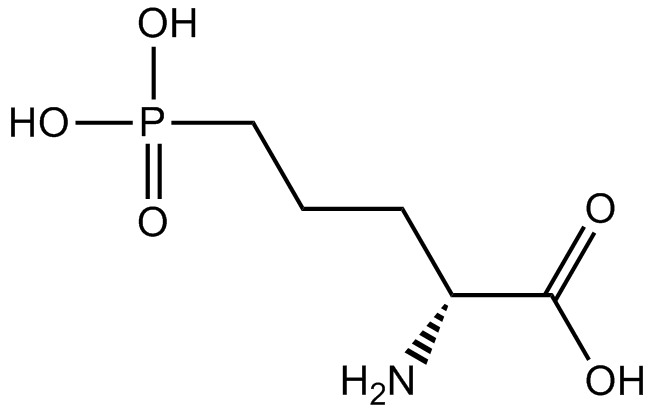D-AP5 (Synonyms: D-2-Amino-5-Phosphonovaleric acid; D-APV) |
| Catalog No.GC16315 |
D-AP5(D-APV)는 1.4μM의 Kd를 갖는 선택적이고 경쟁적인 NMDA 수용체 길항제입니다.
Products are for research use only. Not for human use. We do not sell to patients.

Cas No.: 79055-68-8
Sample solution is provided at 25 µL, 10mM.
D-AP5 is a selective N-methyl-D-aspartate (NMDA) receptor antagonist (Kd = 1.4 μM) that competitively inhibits the glutamate binding site of NMDA receptors.[1] Whereas D-AP5 is the active (−)-stereoisomer, its (+)-isomer (L-AP5) demonstrates considerably less potent NMDA receptor antagonist activity.1 AP5 has been widely used to study the activity of NMDA receptors particularly in regard to researching synaptic plasticity, learning, and memory.[2]
Reference:
[1]. Evans, R.H., Francis, A.A., Jones, A.W., et al. The effects of a series of ω-phosphonic α-carboxylic amino acids on electrically evoked and excitant amino acid-induced responses in isolated spinal cord preparations. Br. J. Pharmacol. 75(1), 65-75 (1982).
[2]. Morris, R.J. Synaptic plasticity and learning: Selective impairment of learning rats and blockade of long-term potentiation in vivo by the N-methyl-D-aspartate receptor antagonist AP5. J. Neurosci. 9(9), 3040-3057 (1989).
Average Rating: 5 (Based on Reviews and 16 reference(s) in Google Scholar.)
GLPBIO products are for RESEARCH USE ONLY. Please make sure your review or question is research based.
Required fields are marked with *




















